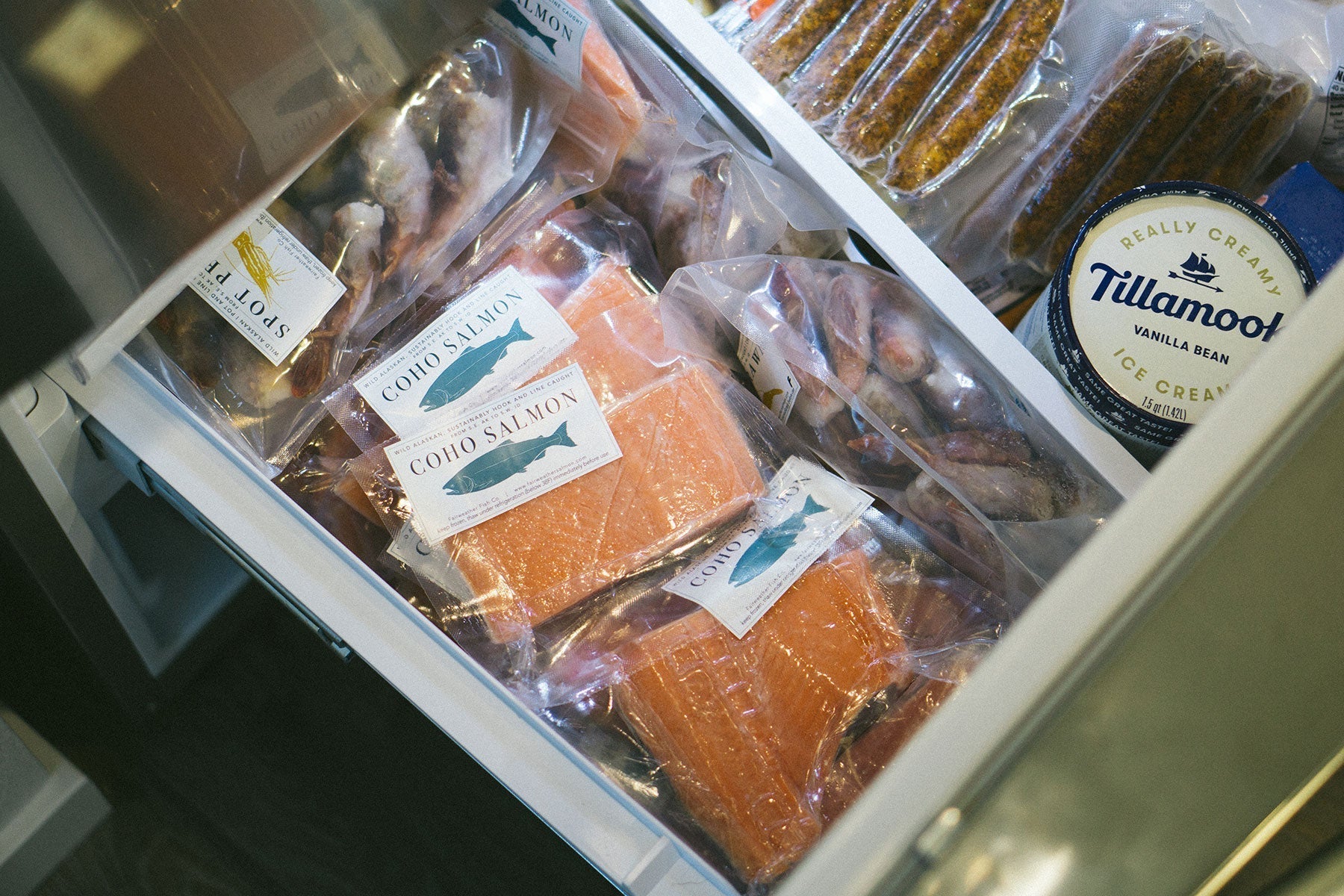
Frozen Fish Tips: Thawing, Storage, and Prep
❄️ Storage:
If you don't already own a chest freezer, we'd highly recommend investing in one! Standard next-to-the-fridge freezers don't go quite as cold, are often "frost-free", and generally get opened and closed a lot. Maintaining a stable, cold (-10ºF or colder) temperature is going to extend the shelf life and flavor of your frozen fish!
A note on freezers: Many upright freezers are advertised as "frost free". It's great to not have frost build up, BUT the trade off is that frost free freezers go through automatic, periodic defrosts -- warming the coils, and warming the product sitting on top of the coils (your fish)! If you're shopping for a new freezer, we'd recommend either chest freezer, or an upright style that is not frost free.
🐟 Thawing:
Slow and steady wins the thawing race. The slower your fish thaws, the closer to fresh it will taste! The best choice is to allow your fish to thaw under refrigeration (i.e. in the fridge, overnight). In a pinch, we'll toss a sealed package of frozen fish in a bowl of cold water. This accelerates the thawing process without compromising flavor. Countertop works too, as long as you watch it closely, and don't let it get warm! (But don't let the FDA know we told you that! 😉) Please, don't ever rinse your fish under hot or warm water to accelerate thawing! It will mush the flesh, and cause the favor to be uncomfortably "fishy".
Hot tip: In a pinch (or just because you can)... Try cooking your fish frozen! We do this all the time at home, especially with coho. It actually tastes amazing, and is such a weeknight life saver. Our method: set oven to 400F, line baking sheet with parchment. Remove frozen fish from packaging, brush both sides with avocado (or other high heat) oil. Place on parchment skin side down. Cook for 4 minutes, then pull from heat, and add your desired seasonings. Return to oven, and bake for an additional 10 minutes or until an instant read thermometer inserted at the thickest part reads 130F
The Alaska Seafood Marketing Institute also has a great guide on cooking fish frozen; we'll link it here!
🍳 Preparing:
Here's our favorite thing about fresh, high quality seafood -- you don't have to overthink it! The most important things to remember are:
1. Quality fish doesn't need much. Though it's always fun to get creative with seasonings and cooking methods, if you're finding yourself in decision fatigue (as we often are...) just go back to basics. Bake, sear, or grill for about 8 minutes, using a high heat oil, and simple seasonings. Finish with a dab of quality butter, flaky salt, and a fresh squeeze of citrus or herbs.
2. If you think your fish needs a few more minutes to cook... It probably doesn't. Pull it from the heat and allow to cook through on the countertop. A quality, instant read thermometer is your best friend! We use this one and really like it. Anything above 130ºF should be pulled and allowed to rest. Cooking rare does not pose a health risk, since our first is thoroughly blast frozen.
3. On a similar thread: If you want to keep it super simple (especially during summer!) don't cook your fish at all! Since it is frozen to -35ºF for well over 24 hours, all our fish is safe for raw consumption. I'd recommend our poke recipe served over rice with fresh seasonal veggies! 🍣



